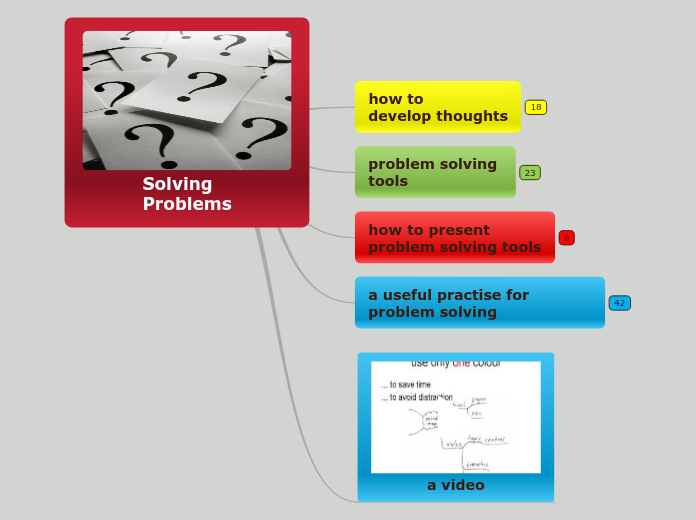Ex: a small start up company have 10 employees with 5 being specialized in a particular area. They work alongside each other day after day. The employers make a decision to take a step back and let the employees create an innovative space where they can work as they please with few guidlines and rules. After a couple months, the company's sales boost because of how much creativity and innovation there is. An example of this in the real world is Apple.
Specific specializations with a mechanistic organization could be represented by individuals performing singular tasks ex: standing at an exit of a store to check receipts ( costco). This ties in with the lack of interpersonal interaction represented in the pros and cons. Employees can specialize in a wide variety of tasks. Each task (even if it is small and may seem unmeaningful) has a big impact of the company.
Organization
Mechanistic vs. Organic organizations
Organic
Definition: an organic organization is one that is very flexible and is able to adapt well to changes. Its structure is identified as having little job specialization, few layers of management, decentralized decision-making, and not much direct supervision
Can create conflict employee vs employee or employee vs employer
High administrative costs
Complexity of decisions
Lack of communication
Boundayless organization
Dynamic environment
Free spirited work environment
Creativity
MECHANISTIC
Definition : organized with a lot of structure and rules
More formalization
Static and Rigid
Work overload on manager
Benefits of specialization & fixation of responsibility
Modern Working Arrangements
Job Sharing
Alternative work schedule which eliminates full time positions and divides the position into part-time workers who share the same job title
Ana began to consider job sharing when her mother became ill. She realized that because of personal responsibilities, she no longer wanted to work on a full time bass but still wanted to be able to perserve her career skills and status with her profession.
Conflict between job sharers
Changes in partners
having bad partners
Loyalty and hard work
Better channels of communication
Best for people who get along well
Provides a time of relaxation
Flextime
a system of working a set number of hours with the starting and finishing times chosen within agreed limits by the employee.
ex: Staggered hours within a fixed schedule
Start and end times differ from the typical 8:30 a.m. – 5 p.m. schedule, but the schedule each day and the days of the week are constant.
• Normal Schedule: Monday – Friday from 8:30 a.m. to 5 p.m.
• Flextime Schedule: Monday – Friday from 11 a.m. to 7:30 p.m.
interfere with interoffice communications
Schedule lacks supervision of employees who work nontraditional hours - could lead to non compliance with company pollicies
May compel employers to implement a sophisticated time recording system to maintain employee scheduling, monitor punctuality and supervise schedule adherance
allow employers to increase coverage beyond traditional work hours
Condensed working week
Putting more hours in per day instead of stretching them out the whole week
ex 40 hours = 10 hour days instead of 5 8 hour days .
Employees could be working unauthorized overtime
Creates difficulties with scheduled meetings
Could cause understaffing
Less supervsion at some time periods
some positions may not be suitable for longer hours
Extended hours of workplace
Employees keep full time pay and benefits
More days off
Telecommunicating
Telecommuting (also known as working from home, or e-commuting) is a work arrangement in which the employee works outside the office, often working from home or a location close to home (including coffee shops, libraries, and various other venues).
Example: Telecommunicating jobs : Software engineer, Financial analyst, Tutor/online teache
Procrastination
Mixing work and personal life
Decreased human interaction
Fewer sick days ( allows you to work from the comfort of your own home
flexible schedule
increased independence
No commuting
Job Enlargement
an increase in job tasks and responsibilities to make a position more challenging. It is a horizontal expansion, which means that the tasks added are at the same level as those in the current position
Ex: Jeff works as a trash man for the city. His boss might switch the routes that he has to cover or may ask him to pick up the recycling routes in addition to his routine trash routes. Even though JEff is not given any extra authority or challenge by taking these additionnal routes, it does provide Jeff with new tasks that he can lessen the repetitiveness of his usual trash route.
Performance can prove to be poor
Increasing the workload
Lack of training- giving employees greater depth of tasks can cause problems through their lack of experience and training.
Employees can remain motivated
Employees can receive recognition
Reduces boredom
Employees have the ability to learn new skills
Job Simplification
This job design technique in which jobs are broken into relatively easy tasks. It targets at great productivity through decreased application of physical and/or mental effort.
Example: Mass Production ( fast food, clothing etc)- Mass production is a key example of job simplification that has skyrocketed in its implementation since the industrial revolution as mechanics has become a larger and easier alternative to using manual labour workers.
Higher potential for staff boredom and accompanying issues of elevated error rates and absents
Lower job satisfaction
Expertise may be developed more quickly through staff task and repetition
Staff are less likely to be difficult to supervise and/or easier to replace
Relatively easy and quick to train staff
Job Rotation
Technique used by some employers to rotate their employees' assigned jobs throughout their employment. It was created to increase and promote flexibility and keep the employees interested in staying with the company/ organization
Mercedes is an example for a job rotation. The company's main products are vehicles. To be able to assemble them, the supervisor must move employees to different positions, since most of the employees have similar specializations and skills, job rotating is proven to be successful
possible circumstance where there is an error in training and mew employees will be taught the wrong way -- decreasing productivity
other industries might not understand why the company cannot hire more skilled and trained employees
Costly and time consuming
Helps you identitfy where employees work best
Gives employees a break from stressful job duties
Encourage development
eliminates boredom
Job Enrichment:
Method to redesign jobs, it is directed to motivate by making the work and workplace more interesting and challenging for the employees. It typically provides more responsibility and thinking to the job which in turn sprouts
Example: Altering the product or provision of service and implementing new minor changes here and there ie starbucks implementing new drinks
Potential for poor performance
Conflict with non participants
Increased workload
Lack of training
Decrease boredom
Learn new skills
Employee motivation
Receive recognition
Organizational Structures
Boundaryless
removes all boundaries ( very creative and innovative ex: Apple
laissez-faire leadership style
difficulty to manage
no clear authority
creativity
Freedom
Network
Outsource to contractors/key responsibilities ex: sweat shops
contractors lack loyalty to your business
more skilled at job ( field that they are trained for)
Cheaper to outsource
Team:
organize into independent teams ex : Group A, Group B, Group C
leads to ineficiencies
not as well organized
Generates ideas/creativity
Imrpoves teamwork
Matrix
organize into cross functional teams ( 2 bosses)
A lot of stress
double deadlines
Double workload
Improves communication throughout the company
Divisional:
organize into independent teams ex: A,B,C
duplication ( more employees) of rules in departments
more focused on service/efficient production
leads to potentially better service
Functional :
Organized by key business skills ex: accounting, sales,marketing, production.
CONS
Groupitis : It means that having 2 managers leads to difficulties in decision making
Communication issues with other departments
PROS
Specialized
Clear lines of authority









